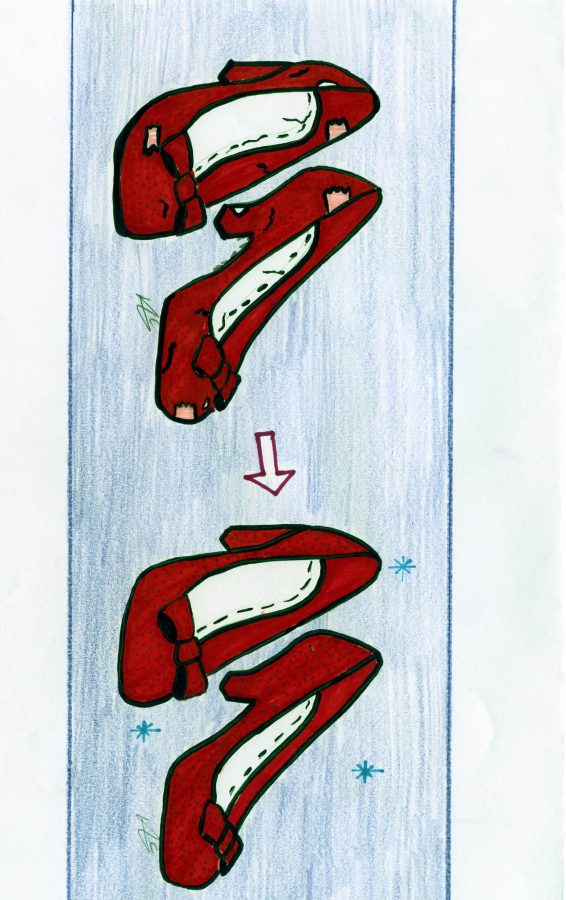Restoring an American gem
Judy Garland’s ruby slippers to be refurbished
In their prime, Judy Garland’s classic ruby slippers skipped down the yellow brick road in the 1939 movie “The Wizard of Oz.” The slippers were then donated to the Smithsonian in Washington D.C. in the year of 1979.
Through their journey down the yellow brick road, many forms of transportation and finally the Smithsonian for the remaining 37 years, the shoes have been through some wear and tear. If someone were to look at the shoes before the planned restoration, they would see their now fragile structure, with paint cracking and flaking on the arches. The Smithsonian believed they could bring them back to their original glory through restoration.
The slippers were worn by Garland in the 1939 classic, but the specific ruby slippers on display are quite special. The creator of the shoes, Adrian Greenburg, made the shoes red to appear sharper on the yellow brick road compared to the silver slippers that are in the book that the movie was based on.
The shoes were dyed red and then a sequin netting was placed over top. Felt also covers the bottom of the shoes to dull the sound of Garland’s footsteps while she danced and skipped on the yellow brick road.
Throughout the movies, there were around seven pairs of slippers. When closely looked at, you are able to see writing on the inside of the shoes that reads Garland’s name and also a number to determine which shoes matched on set. The shoes that were anonymously donated to the museum have Garland’s name, but the numbers do not match; one is a one and the other is a six. The shoes, however, are one of the most visited exhibits in the museum.
In early October, the Smithsonian started fundraising using the website Kickstarter, which they used before for their other fundraising needs. They set their needed funds at $300,000.
As of the Dec. 2, their goal was reached and even exceeded, with a total amount of $349,026 with 6,451 backers.
The money will be used to study and repair the shoes’ materials and build a special temperature-controlled display case. Once the project is started, they will then know how long the process will take.
They have five scientists ready to work on the shoes. The scientists will then determine what is the best way to store the shoes. One idea brought up was the testing of an oxygen-free case. After tests with separate materials, they will determine the best environment to store the shoes in.
The famous 80-year-old slippers will be be repaired and bring joy to many for years to come.



